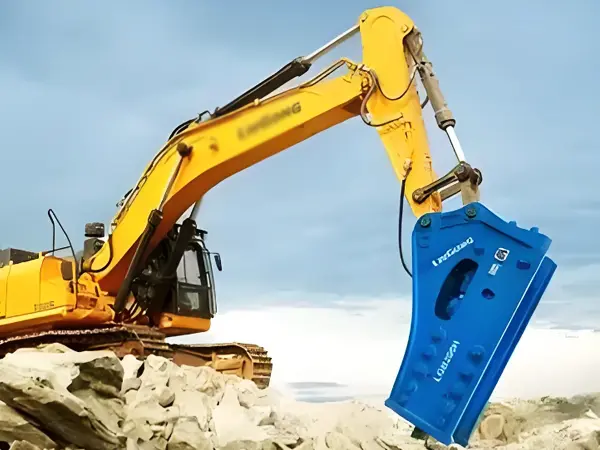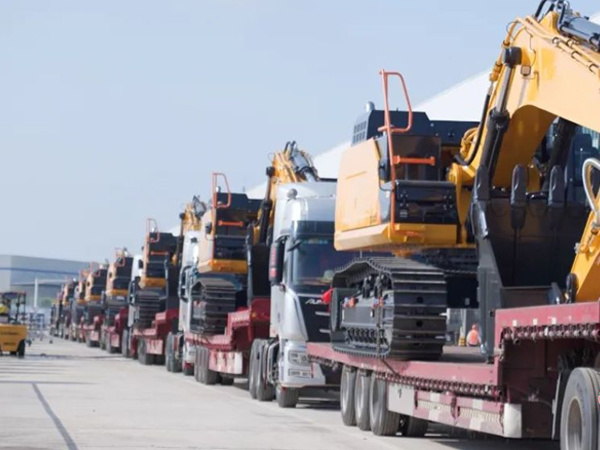The Best Forestry Excavator Models for Sloped Landscapes: Top Picks for Optimal Performance
Release time:
2025-05-22
The Best Forestry Excavator Models for Sloped Landscapes Introduction to Forestry Excavators and Their Importance Forestry excavators play a crucial role in land management, especially in sloped landscapes where maneuverability and stability become paramount. These machines are designed to handle the unique challenges of uneven terrains, offering versatility for various forestry tasks, including c
The Best Forestry Excavator Models for Sloped Landscapes
Introduction to Forestry Excavators and Their Importance
Forestry excavators play a crucial role in land management, especially in sloped landscapes where maneuverability and stability become paramount. These machines are designed to handle the unique challenges of uneven terrains, offering versatility for various forestry tasks, including clearing, landscaping, and road construction. Choosing the right model ensures not only operational efficiency but also the safety of the operators and the surrounding environment.
Key Features to Look for in Forestry Excavators for Sloped Landscapes
Understanding the essential features of forestry excavators can guide you in selecting the best model for your needs. Here are the critical elements to consider:
Stability and Weight Distribution
Excavators designed for sloped landscapes must have a low center of gravity and a wide stance to prevent tipping. Models with enhanced weight distribution systems provide better stability on uneven ground.
Power and Efficiency
Choosing a model with a powerful engine ensures that it can handle heavy loads and challenging tasks. Additionally, fuel efficiency is essential for reducing operational costs, especially when working on extensive projects.
Maneuverability
Excavators with articulated arms or compact designs offer improved maneuverability, allowing operators to navigate tight spaces and steep inclines effectively.
Durability and Build Quality
Forestry work often involves exposure to harsh conditions and rugged environments. Machines constructed with high-quality materials can withstand the challenges of sloped terrains, ensuring longevity and reliability.
Hydraulic Systems
Advanced hydraulic systems improve the efficiency and responsiveness of the excavator, allowing for precise control in intricate operations.
Top Forestry Excavator Models for Sloped Landscapes
Based on extensive research and user feedback, we have compiled a list of the best forestry excavators tailored for sloped landscapes.
1. Caterpillar 318D L
The Caterpillar 318D L is renowned for its exceptional stability and power. With a robust engine producing 130 horsepower, this model can effortlessly manage heavy loads on inclines. Its advanced hydraulic system offers excellent control, making it a top choice for forestry operations.
Key Features
- **Weight:** 18,000 lbs, providing stability
- **Operating Weight:** Allows handling of large attachments
- **Fuel Efficiency:** Engineered for lower fuel consumption
2. Komatsu PC210LC-10
The Komatsu PC210LC-10 blends power with efficiency, featuring a powerful engine that delivers outstanding performance on sloped terrains. Its adjustable undercarriage enhances stability, making it suitable for various forestry applications.
Key Features
- **Engine Power:** 149 horsepower for robust performance
- **Hydraulic System:** Offers precise control for intricate tasks
- **Operator Comfort:** Ergonomically designed cabin for reduced fatigue
3. John Deere 210G W
The John Deere 210G W is a versatile machine ideal for sloped landscapes. It boasts a strong hydraulic system and excellent weight distribution, making it perfect for forestry work. The machine's intuitive controls ensure ease of operation for both experienced and novice users.
Key Features
- **Operating Weight:** 21,000 lbs for stability
- **Versatile Attachments:** Compatible with a range of forestry attachments
- **Comfortable Cabin:** Improved visibility and control
4. Volvo EC220E
The Volvo EC220E is a powerful excavator designed for productivity in challenging landscapes. Its advanced technology optimizes fuel efficiency while maintaining high performance. The machine also features a well-balanced design for enhanced stability on slopes.
Key Features
- **Engine Power:** 168 horsepower for demanding tasks
- **Smart Features:** Intelligent hydraulics for improved efficiency
- **Durability:** Built with robust materials for longevity
5. Hitachi ZX210LC-6
This model is engineered for excellent performance in forestry applications. The Hitachi ZX210LC-6 offers great stability and power, making it an attractive option for operators working on inclines.
Key Features
- **Weight Distribution:** Optimized for sloped terrains
- **Hydraulic Efficiency:** Fast response for precise operations
- **Safety Features:** Advanced systems to protect operators
Considerations for Choosing the Right Excavator
When selecting a forestry excavator for sloped landscapes, it's essential to consider several factors beyond just the model specifications.
Project Requirements
Understanding the scope and nature of your forestry project will help determine the necessary specifications. Whether you're clearing land, building roads, or conducting maintenance, each task may require a different focus.
Terrain Analysis
Analyzing the specific conditions of the landscape—such as steepness, soil type, and vegetation—can influence your choice. For instance, a machine designed for rocky terrain may differ from one suitable for muddy conditions.
Budget Considerations
While it’s tempting to opt for the latest model, evaluating the cost versus the benefits is vital. Sometimes, a previous version of a machine can meet all your needs at a more affordable price.
Maintenance and Support
Considering the availability of parts and service support in your region is crucial. Models backed by good support networks tend to be more reliable in the long run.
Maintenance Tips for Forestry Excavators
Keeping your forestry excavator in top condition is essential for optimal performance, especially when working on sloped landscapes.
Regular Inspections
Conducting routine checks on hydraulic systems, tracks, and engine components can prevent major breakdowns. Ensure that all critical parts are functioning correctly before starting a job.
Proper Lubrication
Regularly lubricating moving parts reduces wear and tear and enhances efficiency. Utilize the manufacturer’s recommended lubricants for best results.
Cleaning and Debris Removal
After each use, clean the machine to remove mud, debris, and other contaminants. This practice helps maintain visibility and operational efficiency.
Scheduled Maintenance
Following a regular maintenance schedule as outlined in the operator's manual is crucial. This includes changing engine oil, replacing filters, and inspecting hydraulic fluid levels.
FAQs About Forestry Excavators for Sloped Landscapes
1. What is the best size of excavator for sloped landscapes?
The best size varies based on the specific project requirements and terrain. Generally, a medium-sized excavator (between 15 to 22 tons) is suitable for most forestry tasks on slopes.
2. Are there specialized attachments for forestry excavators?
Yes, there are multiple attachments available, including grapples, mulchers, and winches, designed specifically for forestry applications.
3. How do I ensure operator safety while using excavators on slopes?
Implementing safety protocols, providing adequate training, and using machines equipped with safety features are essential for ensuring operator safety.
4. Can excavators be used for logging operations?
Absolutely! Many forestry excavators are designed to assist with logging operations, including tree felling and transporting logs.
5. How often should I perform maintenance on my forestry excavator?
Maintenance frequency depends on usage. However, regular inspections should be conducted daily, while more extensive maintenance should be performed as recommended by the manufacturer.
Conclusion
Selecting the best forestry excavator for sloped landscapes involves considering various factors, including stability, power, and efficiency. The models discussed in this article offer remarkable performance and reliability for forestry operations. By understanding your project needs and maintaining your equipment diligently, you can ensure productive and safe operations in challenging terrains. Investing in the right machinery not only enhances efficiency but also promotes sustainable forestry practices, ultimately benefiting both your operations and the environment.





